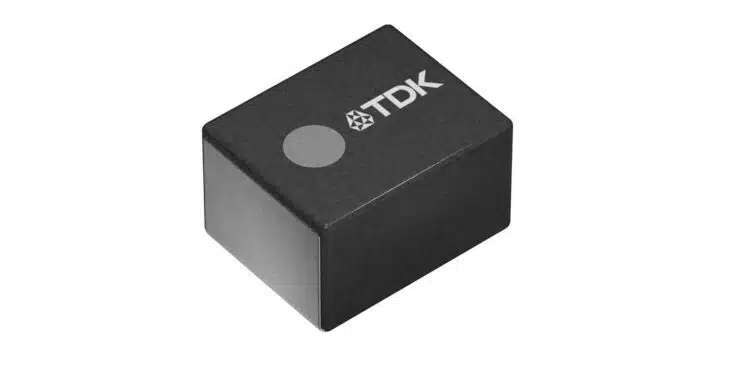TDK expands its thin-film power inductors for automotive applications to higher currents. The new types offer 16% higher rated current and 31% lower DC resistance compared to conventional products. Highly reliable for use in high-temperature environments up to +150 °C.
TDK Corporation has expanded its TFM201612BLEA series (2.0 x 1.6 x 1.2 mm – L x W x H) of thin-film power inductors for automotive power circuits to higher currents up to 5.6 A.
The two new components have a rated inductance of 0.33 µH and 0.47 µH, respectively. Mass production of this product series began in July 2025.
In recent years, demand for inductors for automotive power circuits has continued to increase as electric vehicles and ADAS for safe driving have become more widespread.
Highly efficient power supply circuits are necessary to lower energy consumption, driving the development of low-loss, high-efficiency inductors. Inductors for power supply circuits must be compact, as they need to be installed within the limited space of ECUs. High reliability is also crucial, as they must operate in harsh, high-temperature environments.
Compared to the conventional TFM-ALMA series of the same size with an inductance of 0.47 µH, this new product achieves a 16% higher rated current of 5.6 A and a 31% lower DC resistance of 22 mΩ, offering the highest standard of electrical performance. This helps to reduce loss and to improve efficiency for power supply circuits, enabling support for high-current applications within the same footprint as conventional models. Additionally, the inductor ensures high reliability with an upper operation temperature range limit of +150 °C, thanks to a product design assuming use in high-temperature environments in automotive applications.
With TDK’s proprietary materials and structural designs adapted to the diverse needs of automotive power circuits, TDK will work to expand its comprehensive lineup, utilizing not only thin-film technology but also wire-winding and multilayer processing technologies, thereby contributing to the enhancement of the quality of automotive power circuits.
Features
- 16% higher rated current compared to conventional products, supporting high-current applications
- 31% lower DC resistance compared to conventional products, contributing to low-loss, high-efficiency power circuits
- Highly reliable for use in high-temperature environments up to +150 °C
Applications
- Various automotive power circuits
ADAS, xEV, automotive camera modules, cellular V2X
































